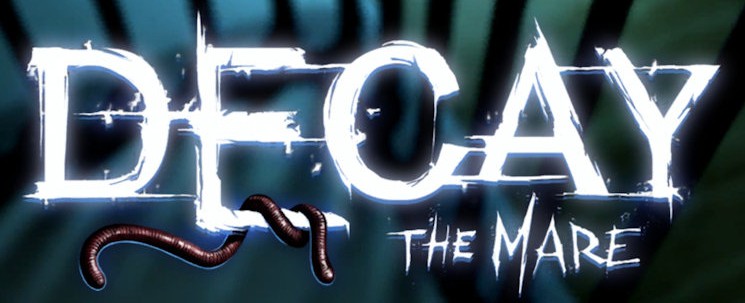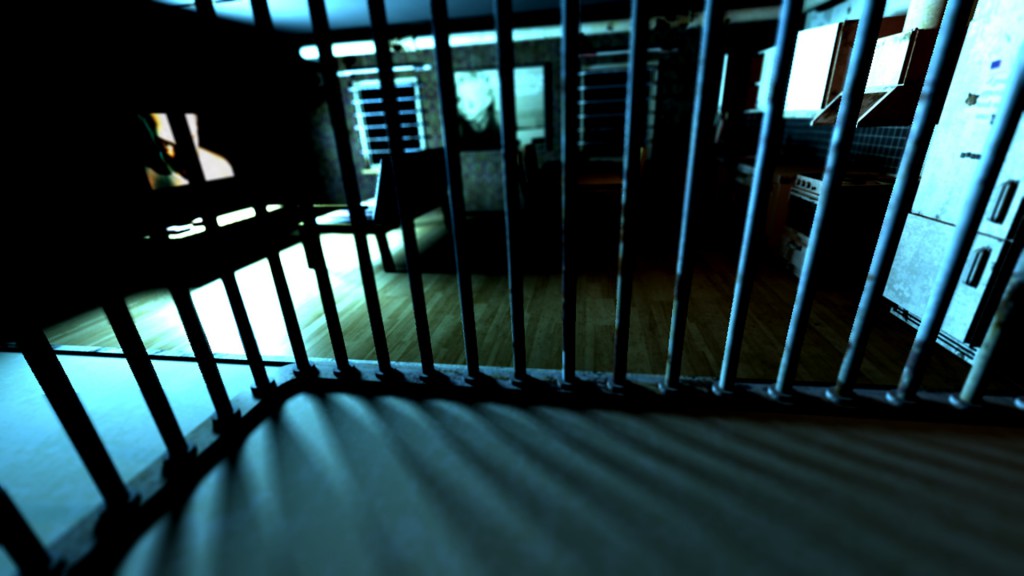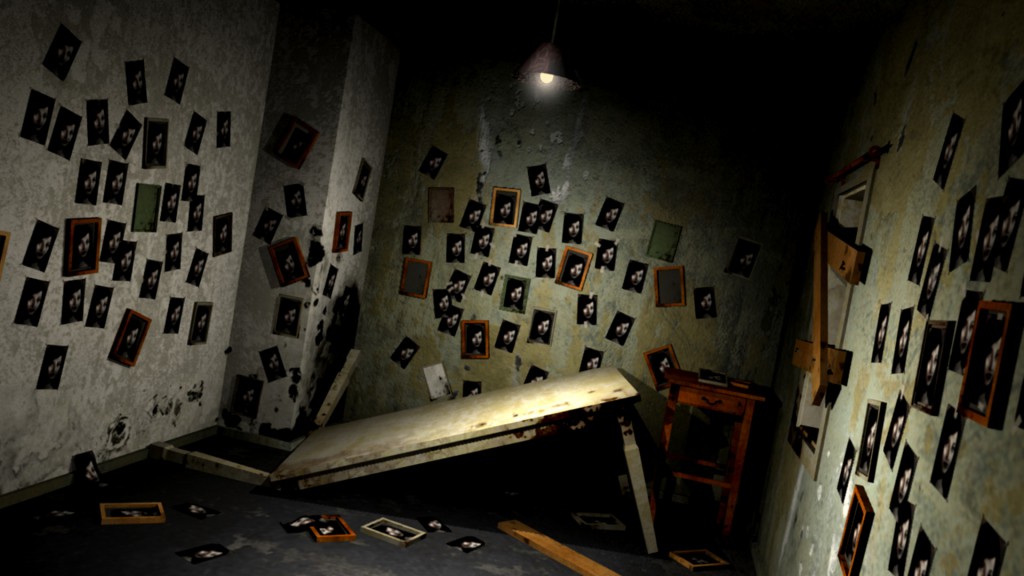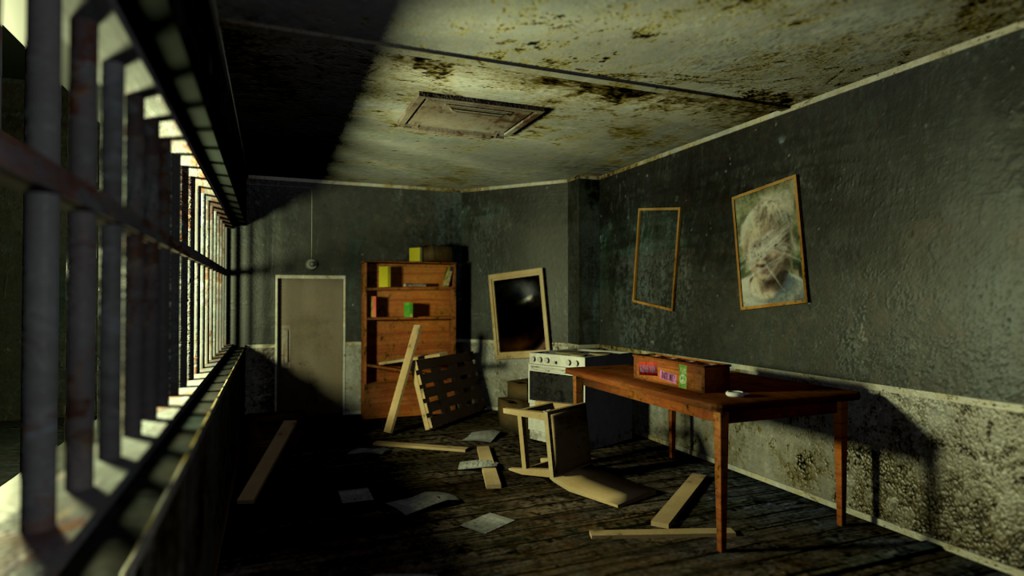
Developer: Shining Gate Software
Publisher: Daedalic Entertainment
Platform: PC, Mac, Mobile
Tested on PC
Decay: The Mare – Review
Four years ago, Shining Gate Software took Xbox Live owners to a simpler time, when video games could be completed without the need for quick reflexes or complicated button combos. In Decay, an interactive story could unfold through nothing but pre-rendered environments, a cursor and brains working overtime. Because the game was released through Microsoft’s Xbox Live Indie Games project, this title never reached beyond the Xbox 360 although it’s point-and-click gameplay would suit the PC or even mobile platforms much better.
This wrong is now righted by means of Decay: The Mare, a new game with a separate story. Now, before we dive into the meat of this review, it should be important to note that the game might seem a bit too expensive to some. Costing about ten bucks, both on Steam and in the App Stores, all three episodes can be completed in less than an hour each, totalling less than three hours of gameplay time. The devs have tried to lengthen this experience by hiding insignificant coins in each episode, but that isn’t enough to entice players to keep coming back to this. The same goes for the multiple endings: the game can end in two different ways, but this only depends on your final decision, allowing you to reload and choose the second ending in a matter of minutes. Good, now that we’ve got this out of the way, let us bring down the hammer!
Story
Decay: The Mare defines itself as a psychological horror game, a definition which should warn sensitive players that this is not a game you’d want six-year old Sally to play. It begins with a man waking up in an asylum’s locked bedroom, finding nothing but a set of pills on the table. After taking these, he falls asleep again, only to wake up once more in the same room, its door now unlocked. Opening the door is the first step towards a sometimes depressing, often horrific journey through the asylum as he tries to make sense of his own madness.
Throughout each of the three episodes, players learn more about this man and his surroundings, yet the full story is only disclosed in the final few minutes. This means that we’re constantly being kept in the dark, both literally and figuratively speaking. Why is a headless man following you? Why is a bloody handbag trying to be your best friend? These are just some of the questions you’ll be asking yourself, searching for answers through carefully dropped hints while our main character is slowly descending into the abyss of his own mind.
Graphics
Limited budgeting is very hard to conceal in the visuals department and becomes apparent from the very first seconds into the game. All of the game’s environments are pre-rendered, yet their quality doesn’t really hold up on a 1080p screen. Thanks to a gritty old-school horror screen filter and downright disturbing imagery, though, this quickly becomes just a small caveat.
The images will burn themselves into your retinas, even more so because they often require you to pay special attention to details in order to progress. Many of the rooms have a Silent Hill-esque feel to them, and although nearly all of them are covered in rust, blood and other bodily fluids, they are more than varied enough to stand out on their own.
Though the atmosphere is exactly what any horror fan would want, it is held back by the slow speed of the animated scenes. The game tries to inflict the occasional jump scare, but often fails to do so because it cannot hide some tell-tale signs, such as the interface disappearing whenever something is about to move. Moreover, the game is just a tad too rough in its approach to these scenes, making veterans see any scares coming from miles away.
Sound
Although the gory graphics do much of the work already, a horror game is often made great because of impeccable sound design. Setting the mood is the ominous theme song. The composer of this deserves to be commended for his creation, as it should be able to effortlessly change any player’s mood into that of a horror stricken, maybe slightly sad, but above all very curious asylum resident.
While playing, sounds are used to inflict a sense of dread, although it does seem as if this adventure could do with a bit more creepiness. Combined with the slightly faltering jump scares, the game never fully realises the level of horror it’s clearly going for.
Gameplay
The lack of true scariness in Decay: The Mare is primarily due to its gameplay. Essentially being a point-and-click puzzle game, it fills each episode with a limited set of rooms in which to satisfy your need to for brain teasers. It doesn’t take very long before the player realises that there is no way to die or even get hurt, which does harm the atmosphere a bit.
However, the fact remains that the developers have given it their all to drown us in their gory madness, and this stays true in the gameplay. As is often the case in this genre, we get to view each room from different perspectives, which can be changed by clicking the corresponding arrows or, if you’re playing on PC, using the arrow keys. This can be disorienting at times as no map is available, yet the asylum is nowhere near large enough for this to become a serious problem.
The game consists of a series of puzzles, one often providing you with a piece of the solution to the next. Some of these can be completed by themselves, but others require you to find and use certain items. You’ll need to decipher a poem, read a horror story and even watch a VHS horror film to find clues, or use a magnifying glass to look at paintings in great detail. The puzzles are varied and often horrific in their own regards, filling the short gameplay time with many epiphanies. However, those experienced in the genre won’t find a real challenge here, as every puzzle is quite easy and – to their credit – logical. Should you ever get stuck, there’s even a very helpful hint system to guide you, simultaneously solving the disorientation problem as it shows you the way to the next step.
Conclusion
Decay: The Mare is a short, but emotionally powerful point-and-click title that is filled to its gory brim with logical puzzles. If you enjoy the kind of horror found in the Silent Hill series, the visuals will be right up your alley. Be warned, though, that there is a reason this is called a psychological horror game, “survival” being gloriously absent from that description. This means that the protagonist never carries a weapon and players have to rely solely on their wit and sense of logic to reach this story’s conclusion.
Also, its short completion time – our Steam account states a playing time of 2 hours, never even having reached a third – might turn off otherwise interested players. Look at it as an interactive horror film, however, and you’ll find that it costs less than a Blu-Ray while providing a more immersive experience. All in all, anyone who likes to solve mysteries and puzzles on their own pace, without any of the action many modern horror games throw into the mix, should give this one a spin.










No Comments